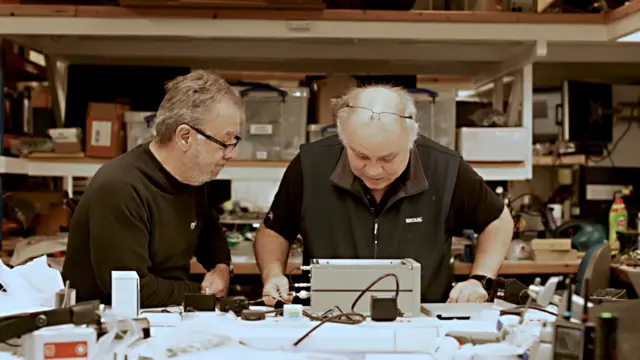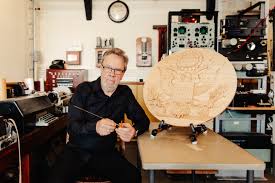Introduction
John Little, a specialist in counter surveillance, dedicated over 50 years to recreating The Thing, a covert listening device used during the Cold War. Originally hidden inside a wooden ceremonial seal gifted by the USSR to the US in 1945, The Thing was a groundbreaking spy bug that operated without wires or batteries. This blog explores the fascinating story of this unique device, John Little’s painstaking reconstruction efforts, and the cutting-edge modern version he is developing.
The Cold War Spy Bug Known as “The Thing”

In 1945, the Soviet Union presented a large wooden seal to the US ambassador in Moscow, Averell Harriman. Unbeknownst to the Americans, the seal contained a hidden listening device known as The Thing. It operated entirely passively — with no internal power source — and could only be activated remotely by radio waves. This made it virtually undetectable during seven years of surveillance inside the US embassy.
The bug was created by Leon Theremin, the Russian inventor famous for the theremin musical instrument that produces eerie sounds without physical contact. Theremin’s ingenious design has been described as “a work of absolute genius.”
John Little’s Lifelong Mission to Recreate The Thing
John Little first encountered The Thing in 1975 while working with the British Foreign Office. Fascinated by the device’s simplicity and brilliance, he committed decades to understanding and replicating it. According to Little:
“I was fascinated. It’s totally unique and I was determined I was going to make one of those and make it work, and I did… but it took a long while.”

His painstaking reconstruction has finally been documented in a new film, premiering at Bletchley Park’s National Museum of Computing — a site synonymous with espionage history.
From Cold War Technology to Modern Surveillance
Inspired by The Thing, John Little is now developing a 2024 version that incorporates 4G, satellite phone, and internet technology. This advanced device allows remote control over a range of up to 12,500 miles, covering half the Earth. Little believes that if Leon Theremin were alive today, he would embrace these innovations.
The Genius of Simplicity in Espionage Devices
The Thing’s design proves that sometimes espionage technology does not need to be complex — just clever and invisible. Emily Barnard, a producer of the documentary, said:
“John is very humble, but he’s also a genius like Leon Theremin. Sometimes technology doesn’t need to be complex; it needs to be simple and clever and go under the radar and not be noticed.”
Why The Thing Matters Today

The story of The Thing reminds us of the ingenuity behind Cold War espionage and the lengths governments went to gather intelligence. John Little’s work preserves this history and demonstrates how surveillance technology evolves while keeping the spirit of innovation alive.
Watch the Documentary and Learn More
The documentary about John Little and The Thing was an instant success, with the premiere selling out within 48 hours. A second screening is scheduled for 27 September. For those interested in the history of espionage and surveillance technology, this film is a must-watch.
Related Articles and Further Reading
- Top Cold War Espionage Tools and Their Impact
- History of Surveillance Technology: From The Thing to Digital Bugs
- Bletchley Park: The Hub of British Espionage
- Modern Spy Technology: The Evolution of Surveillance Devices
External Resources
- BBC News: Man spends 50 years recreating The Thing spy bug
- History.com: Cold War Spy Technology
- Wikipedia: Leon Theremin
Conclusion
John Little’s dedication to recreating The Thing highlights a remarkable chapter in espionage history — one where simple, ingenious technology quietly shaped global politics. His work not only honors Leon Theremin’s legacy but also pushes the boundaries of modern surveillance tech. As espionage evolves, the blend of history and innovation remains a fascinating story of human ingenuity.









